A Bike for the Solstice Ride
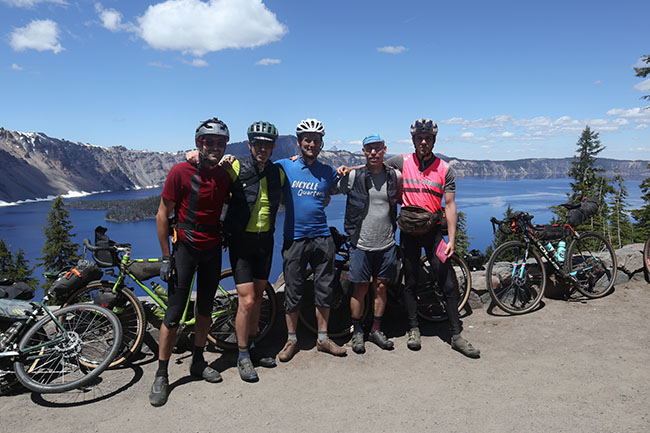
During the summer solstice, Ryan Francesconi led a group of 14 friends on a truly amazing adventure: We took the train to Klamath Falls on the border between Oregon and California and then rode back to Portland on forest roads and trails traversing the Oregon Cascades. It was a 2-day, 640 km (400-mile) ride that challenged riders and bikes to the max. Not only was our route 90% gravel and single track, it also was anything but flat.
A highlight was climbing on deserted gravel roads to the top of Crater Lake (above), but even more memorable were the countless gravel climbs and descents. On a ride like this, you live entirely in the moment – just you, the bike and the other riders. I’m grateful to have friends – and a bike – that enable me to do rides like this.
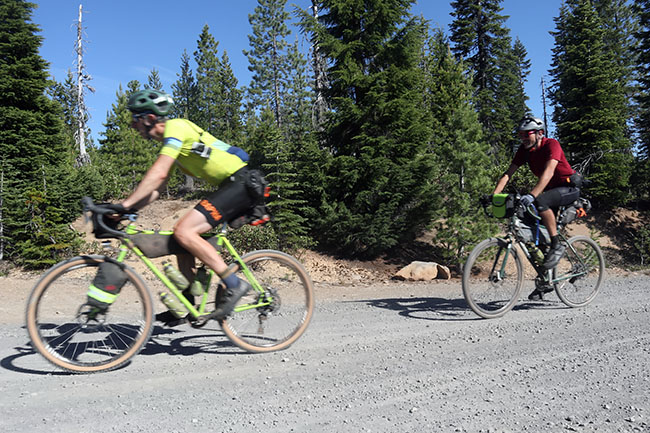
What bike to ride for an event like this? We were heading into the country of the Oregon Outback – where my Rene Herse’s 42 mm tires already had proven a bit marginal in the past. The Herse’s ‘road’ gearing also wasn’t quite low enough for the steep gravel climbs that Ryan had scouted for his route.
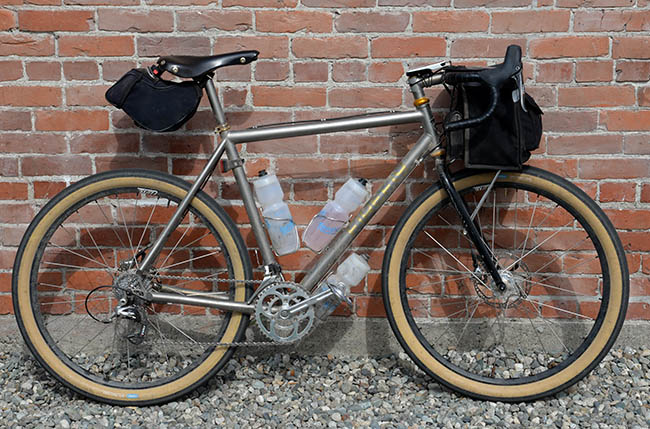
So it was natural to take my Firefly. Equipped with ultra-wide 54 mm tires, it seemed an ideal choice for this ride. It’a bike that is completely dialed for riding fast and long on rough surfaces.
On a ride this long and challenging, small things make a big difference. Having handlebars that offer multiple comfortable positions is key for me to enjoy a ride this long. The Firefly is equipped with our Rene Herse Maes Parallel bars, which were perfect for this ride.
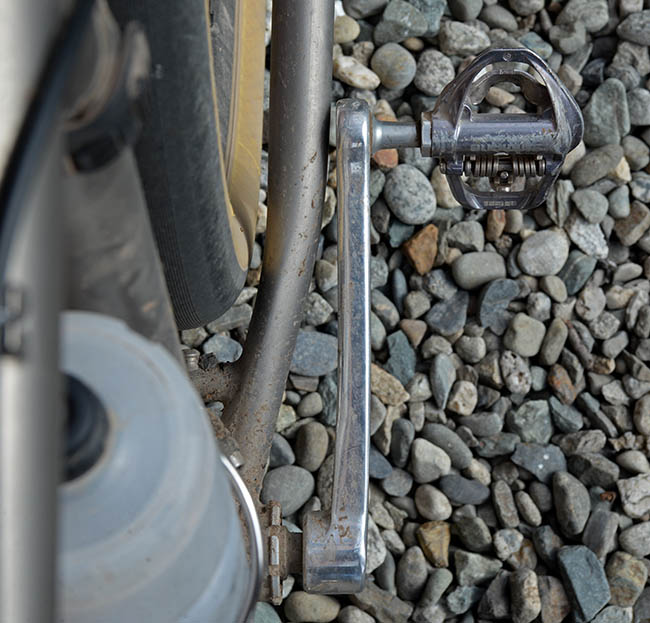
A low Q factor helps my spin and allows me to put out power, hour after hour. The Firefly has perfect clearances for its 54 mm-wide tires, and its beefy chainstays appear to be one reason why it climbs so well. Combining these features with a Q factor of just 148 mm is something I didn’t want to miss on this ride.
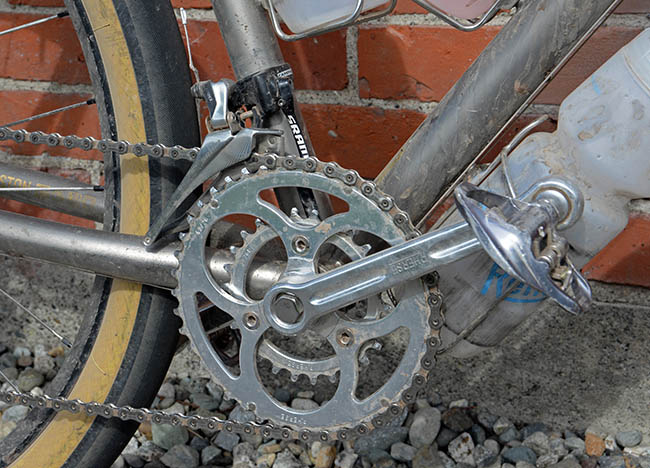
I reinstalled my 42×26 chainrings, so I could ride most of the time in the 42-tooth ‘big’ ring, but still had the option of dropping into the 26-tooth when the trails got really steep. This allowed me to run a tight 12-27 cassette with small steps between gears.
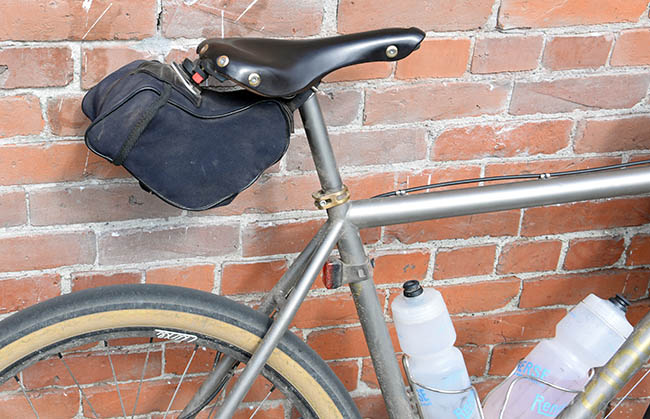
Having a favorite saddle is important, too. This Berthoud Aspin has been on many adventures, and it fits me like the proverbial glove. It works perfectly with the Berthoud saddlebag, but for this challenging two-day ride, I knew I’d need more capacity.
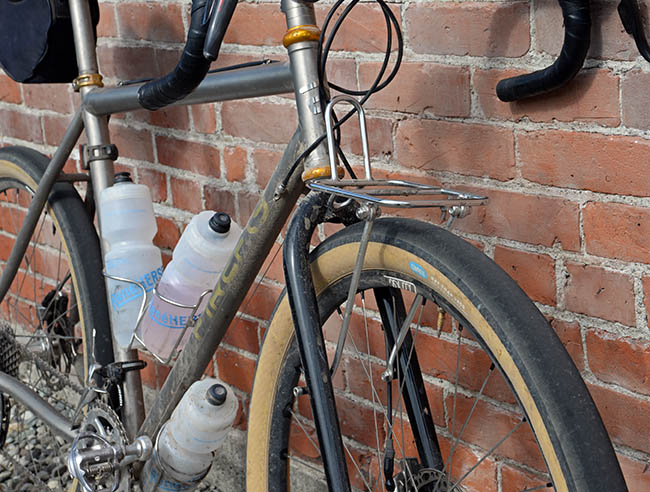
The Firefly’s fork is equipped with mid-fork eyelets intended for low-rider racks. The low-riders don’t work well on singletrack, as the panniers get caught on obstacles that are close to the trail. So I decided to use a handlebar bag instead. I installed a Rene Herse UD-1 rack to support the bag. Mounting the rack took all of five minutes.
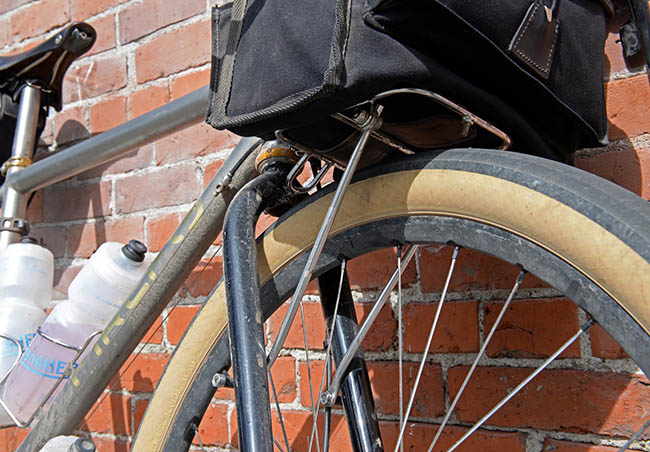
The Berthoud GB-28 handlebar bag sits on the rack. Its soft bottom conforms to the shape of the rack, locking it in place.
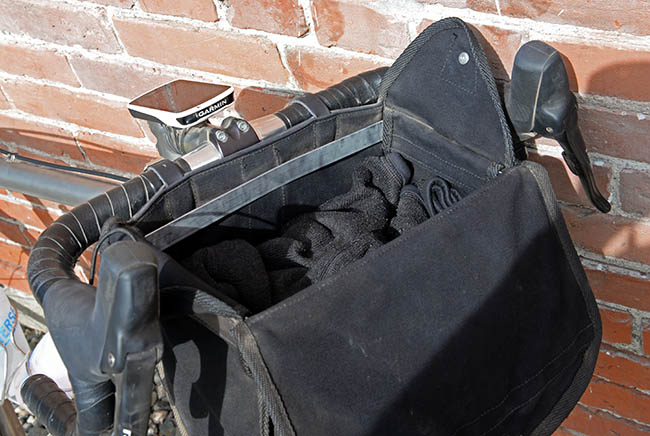
At the top, I added a Rene Herse bag stiffener to make sure the bag didn’t move on the rough trails of the Oregon Cascades. The bag’s cavernous interior had more than enough space for the clothes, tools and food I needed for this ride (plus water filter, emergency blanket, backup power supply for the GPS, camera, and a few other things). Everything is easy to access, which is another big plus. I placed some heavy items that I didn’t plan to use (tubes, tools, rain jacket) in the saddlebag.
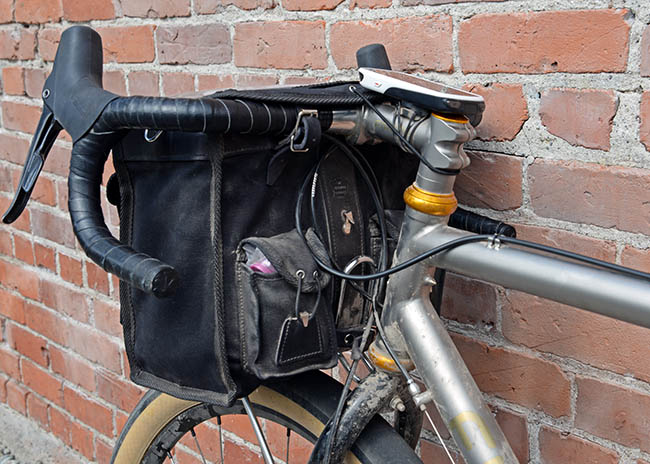
There aren’t any decaleurs for the Firefly’s four-bolt stem that have proven themselves on really rough terrain. So I used the bag’s leather straps to attach it to the handlebars. Together with the bag stiffener, this creates a very firm and reliable connection: The last thing you want in the middle of nowhere is your bag flying off. (This happened to one rider in our group, when the straps of his brand-new bikepacking bag broke.) Strapping my bag directly to the bars did not leave any space for my hands between bag and bars. On the road, I found that I could still use the on-the-tops handlebar position by sliding my hands underneath the top flap of the bag.
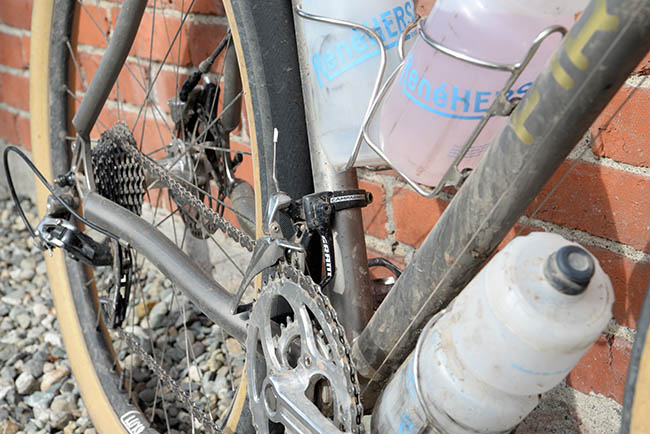
Three water bottles are useful on a ride where resupplies can be many hours apart. The Firefly is equipped with two lightweight Nitto 80 cages. For this ride, I mounted a Nitto T cage under the down tube – the only cage that has never dropped a bottle from that position during all my rides.
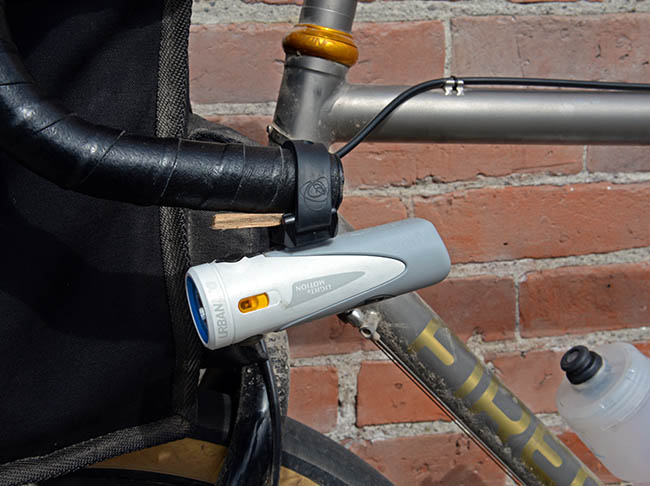
The first night, we arrived at our destination – Oakridge – just before sunset, but we knew that our second stage – more than 200 miles to Portland – would require riding at night. I needed lights. It would have been nice to build a wheel with a generator hub for the Firefly, but I didn’t have a spare 26″ rim. A battery-powered light would have to suffice. Fortunately, the nights during the solstice are short.
I usually strap my light underneath the handlebars, where it’s neatly tucked out of the way. However, that position was obscured by the bag now. The Maes Parallel bars are long, so I mounted the light on the end of the drops. I still could use all hand positions, but there was a problem: The bars angle slightly upward, and I want the light to illuminate the road, not the sky. A sliver of wood formed a wedge that allowed me to align the light by sliding it into the clamp as far as needed.
On the rear, I strapped a small rechargeable light to the seat tube, in the same position where our Rene Herse taillight mounts. With the lights’ run time somewhat limited, I turned off my lights when they weren’t needed, for example, when I was riding in the middle of a paceline.
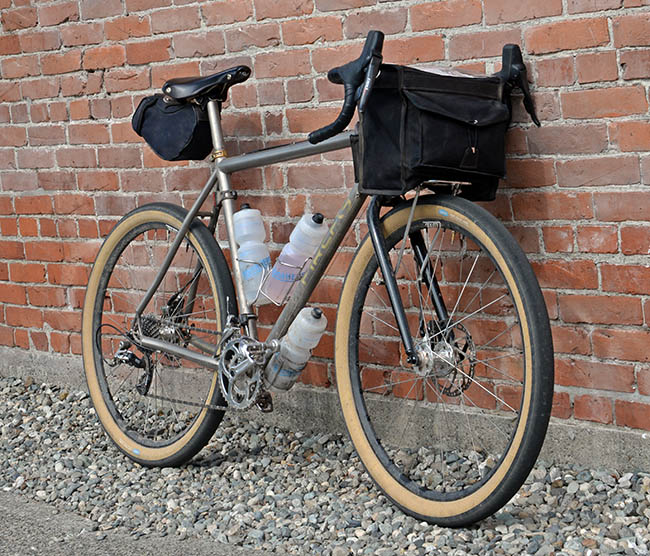
The photos show the bike after I returned from the big ride. As expected, the Firefly performed flawlessly. Inflated to just 18 psi (1.25 bar), the big Rat Trap Pass Extralight tires soaked up the bumps and vibrations – even washboard – without fail. They floated over the loose surface where the narrower tires of the Herse had sunk deep into the gravel.
The low-trail geometry and handlebar bag worked great on the fast gravel descents. I used every single gear on the bike, from the 42×12 to the 26×27. I drank all my water during one particularly hot stretch. And when we returned to Portland at 4 a.m. after two days on the road, I had no aches or pains thanks to the comfortable saddle and ergonomic handlebars. The Dromarti leather shoes did their part, too – since wearing them, I no longer suffer from hot feet no matter how hard the ride and how hot the temperature.
The Firefly is one of my favorite bikes, and I was glad I could transform it from a stripped-down racer to a touring rig. Having the right bike made this challenging ride even more fun!
Click here to find out more about Rene Herse components.


